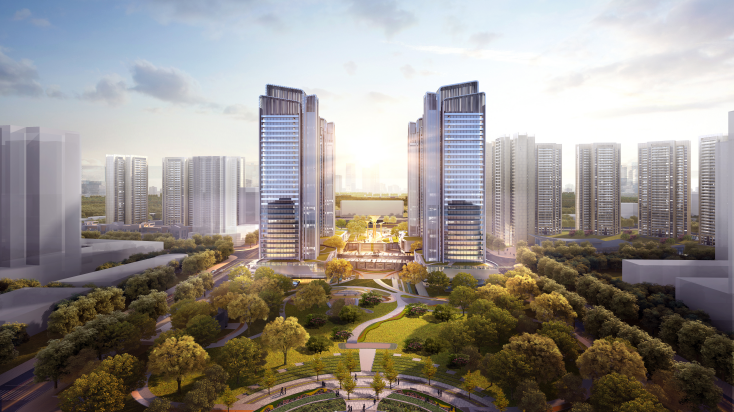Striking a balance when living in an urban environment is important, but often difficult. Whether your choice to live in the city is work or lifestyle related, there are many elements to consider. Often, urban life seems to "run away" on you -working weeks roll around quickly, it's noisy, there's traffic, it's polluted and overpopulated. Some people thrive on what it has to offer- the galleries, great shopping, dining out, going to the theater. Whatever your view, having a quiet, safe, and private sanctuary to come home to can make all the difference.
Many urban homes are boxed-in apartments with no outlook, aspect or garden. To decrease the yang energy found here and in the center of large cities, interior colorings should be yin. Opt for muted tones, natural floorings, plants, soft furnishings. If the town center is small, its feeling can be yin -it's lonely and mysterious when it closes down at night. In this instance, home interiors should be cheerfully yang-select bright tones, colorful rugs, ottomans, artwork and flowers. The suburbs may also be mainly yin, if there is little night activity, so balance your suburban home with yang tones and objects.
Rooms in warehouse spaces tend to stretch on forever, with their high ceilings, massive windows, and lack of dividing walls. Here it's often difficult to ground the energy, so introduce plants and cozy, comfortable yin areas-use screens, curtains, cushions or color to create bound areas between spaces. An easy way to achieve this is to create "small spaces" within a large area. Selectively cluster furniture together according to the various functions for living. Spaces for relaxing might include comfortable soft furnishings such as couches, armchairs, cushions or rugs. A work or study space might be defined by a length of fabric hanging from the ceiling to the floor, with desk, task chair and computer hidden from general view. Creating a sacred space for reading, writing or painting is a good idea as it psychologically divides the activity from the rest of your life.
Houses in close proximity to parks tend to have a better yin-yang balance. If you live in the heart of the city, make the effort to visit the park to retrieve some balance for yourself.
Roads and Railways
As conductors of Qi through an environment, roads can significantly transform where you live. Fast-moving Qi travels along straight urban roads; residents here often feel agitated and unable to relax. The same principle applies to houses at the end of long T-junctions or at busy intersections. Tall shrubs and plants on the boundary will slow down Qi, and can help restore some balance.
Always check the local transport patterns before purchasing or renting a home. Visit at different times of the day. Steady but not fast traffic on curving roads near your home can be beneficial. The best location is where Qi meanders-in the inner bend of a river or road.
The visual impact of an overpass can not only can change a home, it can conduct Qi away from the area, greatly affecting the fortunes of those living at eye level or underneath the overpass. Those living under an overpass should place lights on the corners of the house to symbolically lift the overpass. A home here may feel oppressive and depleted of energy. Similarly, trains carry Qi away, while subway trains are destabilizing, particularly if they are below the home. Residents of apartments overlooking a busy road should place a mirror outside their home to deflect the problem. Alternatively, colored glass in the windows facing the road will help block the unattractive view while allowing light in.
Qi travels quickly along straight urban roads - this affects houses or buildings at the end of long T-junctions or busy intersections. This phenomenon also helps explain why businesses in this position are often difficult to lease or sell.
The best location for a home is where Qi meanders, in the inner bend of a river or road.
The residents in this cul-de-sac will find Qi hard hitting - they are likely to feel agitated and unable to relax.
Many warehouses that have been converted to contemporary living spaces still have their trademark high ceilings, vast windows and not a dividing wall in sight, making it difficult to "ground" the energy. Use screens, curtains, cushions or color to create boundaries between spaces; the result is cozier, and more intimate.
This inner-city warehouse has ample cozy, comfortable yin areas. Colorful curtains have been used to separate the living and dining area from the kitchen and bathroom areas. Soft furnishings, plants and appropriate lighting have also been used to enhance, divide, and balance the space.
